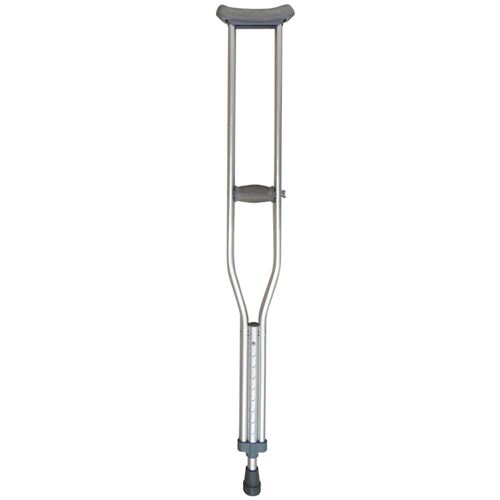The first evidence of crutches dates back to the time of the Egyptian Pharaohs, clearly visible in a carving dating to nearly 3000 BC. The earliest crutches were essentially a T-shaped design, which slowly morphed into the more popular V-shape in use today. They were made from a piece of hardwood cut to length, and split near the bottom. A short wooden piece was wedged between the two lengths, for both handle and underarm use.
The next stage of development was padding. Leather strung across the top was the first step, making the armpit contact less harsh. This later developed into a padded section, usually filled with horse hair, again using leather as the contact material. The handle was also padded in the same way.
In 1917 Emile Schlick patented the first pair of ‘forearm’ crutches for commercial sale. Schlick was an engineer from Nancy in France but the crutches were initially mass produced in New England, USA. They were widely used throughout the first world war, when the demand for such mobility aids was unprecedented. Later, customisable height crutches were designed by A.R. Lofstrand, Jr.
In the 1950s, US polio sufferer and designer Thomas Fetterman set about designing the best possible forearm crutches. His use of titanium and innovative shock-absorbing rubber feet substantially improved user comfort.
As an aid for ambulation physiotherapists are most often responsible for fitting crutches and teaching their safe use. Every student remembers the metaphor “Good leg to heaven bad leg to hell” when teaching the safe ascent and descent of stairs with crutches. Whether axillary or forearm crutches are used comes down to availability, preference, and length of time to be used, with forearm crutches used for more long lasting or permanent disabilities.
Description provided by Magda Fourie of South Africa and Glenn Ruscoe of Australia.

